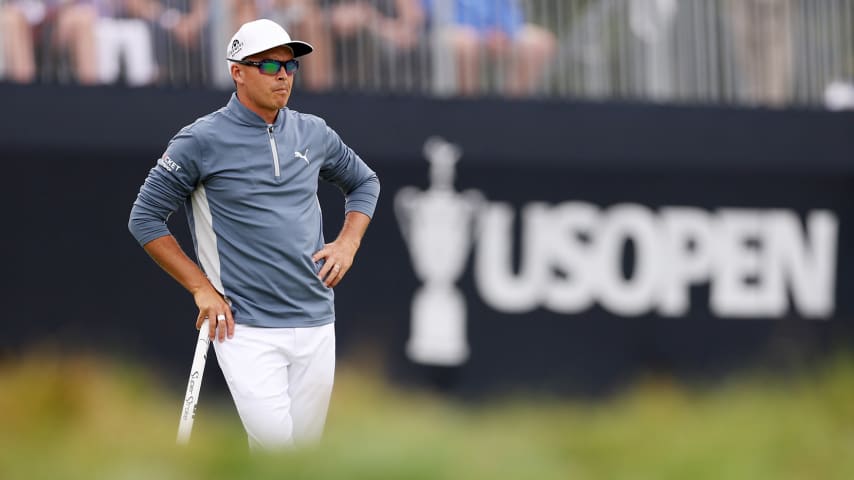Max Homa’s L.A. Story
14 Min Read
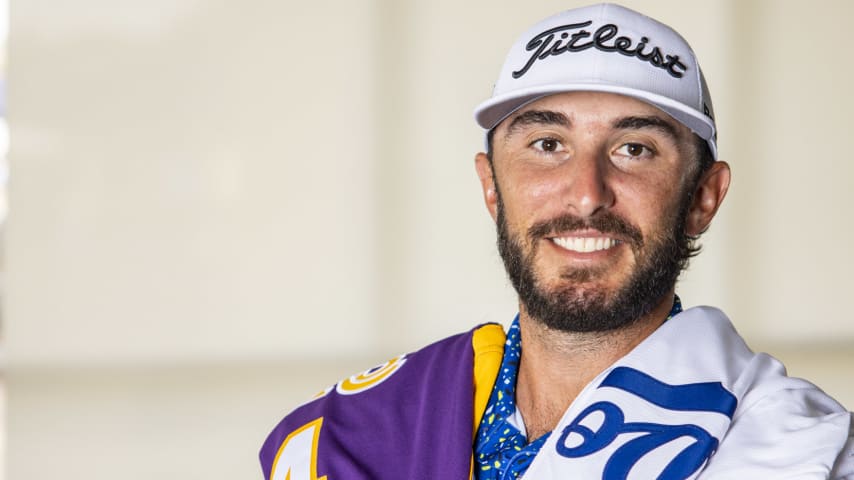
How the host city of this week’s U.S. Open shaped one of the PGA TOUR’s biggest stars
Written by Sean Martin
How the host city of this week’s U.S. Open shaped one of the PGA TOUR’s biggest stars
It was a round that elicited both awe and anxiety.
Max Homa’s 61 in the first round of the 2013 Pac-12 Championship shocked everyone on site.
Los Angeles Country Club, a clandestine club hidden in the midst of a city obsessed with fame, had not hosted an outside tournament for a half-century. But a new generation of members, with one eye toward hosting even bigger events, was eager to show off its recently-renovated course and change the reputation of a club once described as ‘aloof’ and ‘a cloistered enclave.’
The proceedings did not begin as planned, however. Not after a college kid – not even the best player on his team – broke the course record in the opening round.
Hosting a U.S. Open at Los Angeles Country Club had been discussed for decades. That score left some wondering if the new course could fulfill such aspirations.
“I think they were taken aback by it,” said Derek Freeman, then the head coach at UCLA, which hosted the tournament. “Like, ‘Oh, my gosh. Is our course hard enough?’”
The work on Los Angeles Country Club’s North Course had been performed by one of golf’s leading architects, Gil Hanse. He resuscitated a design blunted by the passing years and buried under soil and silt, restoring a rolling, rustic layout that blended beautifully with the surrounding topography while confronting players with the strategic quandaries that designer George C. Thomas was famous for.
Fortunately, Homa’s first round proved to be an incredible outlier. His score was so unexpected that one team’s coach, upon seeing it on the scoreboard, assumed that the results from a recent club scramble had yet to be removed. Homa led by four after the first round and went on to win by five.
With only three events remaining in his senior season at Cal, he’d earned the first victory of his collegiate career. (He would win the NCAA Championship weeks later, as well.)
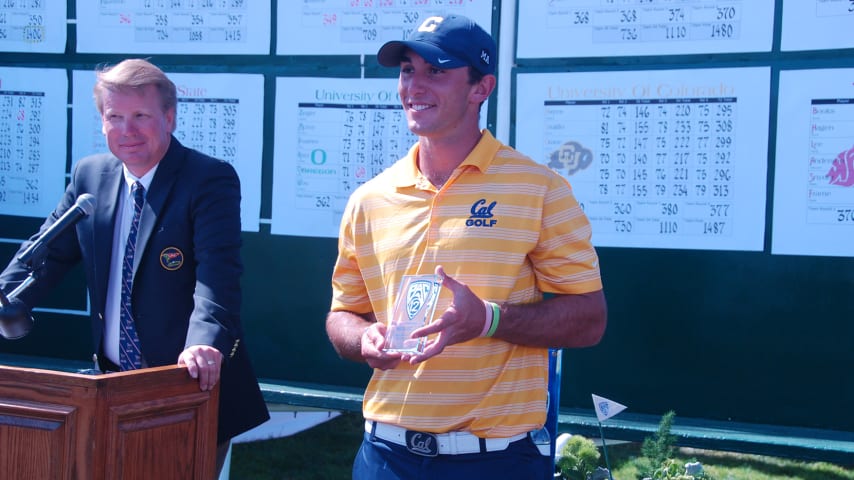
Max Homa holds the trophy after winning the 2013 Pac-12 Championship at Los Angeles Country Club. (Cal Athletics)
That his first collegiate win came just 30 minutes from his hometown, where he’d grown up on a 4,400-yard golf course, added to his satisfaction. Los Angeles is the city that shaped him.
Even sweeter? That the college coach who had not offered him a scholarship out of high school took part in the trophy ceremony.
“It’s just perfect timing,” Homa said about the victory. “It just feels very validating.”
The same could be said for the North Course, which had proven itself a worthy test after enduring Homa’s early onslaught. The average round that week was more than 4 over par; only one other round was lower than 67.
The following year, Los Angeles Country Club entered into a provisional agreement to host this year’s U.S. Open. The news became official in 2015.
In the intervening years, Homa has taken a circuitous, and well-publicized, route to becoming one of the world’s best players. He arrives at this week’s U.S. Open as a top-10 player in the world and No. 3 in the FedExCup. He has won six times since 2019; only Jon Rahm, Rory McIlroy and Patrick Cantlay have won more in that span.
Homa is not the only U.S. Open favorite with ties to Los Angeles – Cantlay, a UCLA alum, is higher in the world ranking and Collin Morikawa, who also grew up in the city’s suburbs, has already won two majors – but he is undoubtedly the face of this championship.
His Pac-12 victory is one reason, as is his eponymous Dodgers hat and unabashed admiration for Lakers legend Kobe Bryant.
After his first PGA TOUR victory, Homa received a congratulatory phone call from former Dodgers manager Tommy Lasorda. Homa has thrown out the first pitch at Dodger Stadium and become friends with Walker Buehler, the team’s All-Star pitcher.
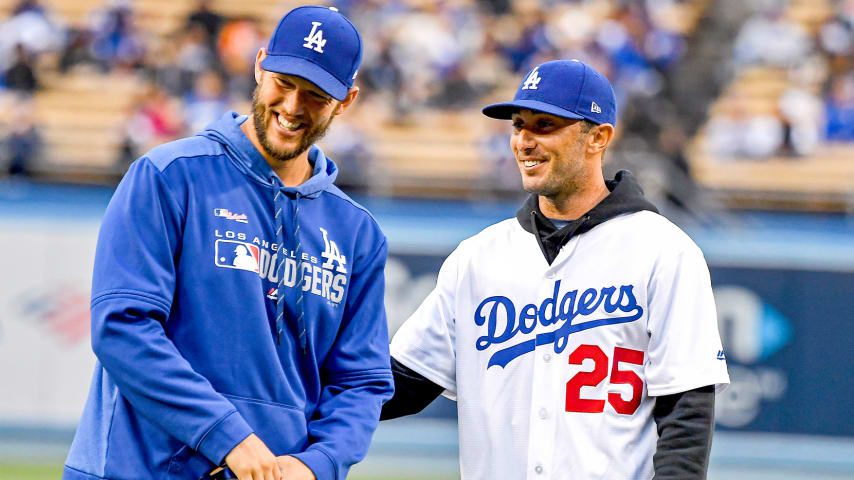
Max Homa is a diehard fan of Los Angeles’ sports teams. (Getty Images)
Homa’s relationship with Los Angeles runs deeper than a rooting interest, though.
He is a product of Southern California’s scruffy public courses and even the son of an acting coach who has worked with some of Hollywood’s biggest stars.
And, befitting his birthplace, he’s also the PGA TOUR star who has most openly embraced his celebrity. His father, John, used to encourage him to listen intently to TOUR players’ interviews in order to glean insights.
Max is now the one behind the microphone. His willingness to share widely and openly across social media platforms and podcasts made him one of the game’s most popular players even before the results caught up.
But if his family, like countless others in this country’s history, had not migrated westward in search of greater opportunity, he never would have benefited from the constant sunshine, the influence of the city’s athletic stars or the tiny little course that introduced him to a PGA TOUR winner and the longtime caddie that has been instrumental to his success.
The same intensity that took Max from an overlooked high-school recruit to a top-10 player in the world are the same traits that brought his family to Hollywood. They fueled the acting career that John Homa used to escape a small industrial town in Pennsylvania.
His father’s work ethic also inspired Max to emulate Southern California legends like Bryant and Tiger Woods, whom he first watched at the local PGA TOUR stop. Max said he was drawn “not just (to) their talent but more so their drive to work.”
When Bryant died in a helicopter crash in 2020, Homa tweeted, “He didn’t know it but Kobe made me tougher. It’s always been ‘what would Kobe do?’ when it came to golf. Put in the time and keep ur (sic) head down. Don’t let anyone outwork u (sic).”
Max has ‘Relentless’ tattooed on his right wrist and used the Stonecutter’s Credo, which Bryant hung by his locker, as inspiration during the famous slump that almost derailed his career. It reads in part, “Yet at the 101st blow (the rock) will split in two, and I know it was not that blow that did it, but all that had gone before.”
While Max is known on social media for his humor and willingness to discuss his frailties, he shares an underlying fire similar to his heroes. He still remembers the name of the player UCLA chose to sign instead of him and is proud that he became a TOUR winner while that other player, the one who got the Bruins’ lone scholarship for the Class of 2009, only spent time on TOUR as the member of a competitor’s entourage.
“If Max lives to be 150 years … he will never forget that name,” said his college coach at Cal, Steve Desimone. The snub drove Max during his college days in Berkeley, some 350 miles north of his hometown of Valencia.
Both father and son left home to pursue a dream.
John grew up in small Nesquehoning, Pennsylvania, where many of his classmates went to work for Mack Truck, Bethlehem Steel or in the coal mines. “Most of my friends are still there,” he said in a 1984 newspaper article. “I knew I had to do something else.”
John found acting while attending Penn State. He was surprised when his father, a foreman at Ingersoll-Rand, supported the new pursuit, one that was uncharacteristic of his upbringing.
John and his wife, Bonnie Milstein, moved to New York after college. John starred in off-Broadway productions of “A Streetcar Named Desire,” playing the role of the hypermasculine Stanley Kowalski that was originally portrayed by Marlon Brando. Kowalski lived the same working-man’s existence that John had escaped. Kowalski is a crude, violent and unforgiving character. It was a role that John’s background had prepared him for, giving him an understanding of “the blue-collar ethic … that working-man’s mentality,” he said.
He was described in one review as having a “hard-coiled, no-nonsense energy” and a “fiercely inquisitive stare.”
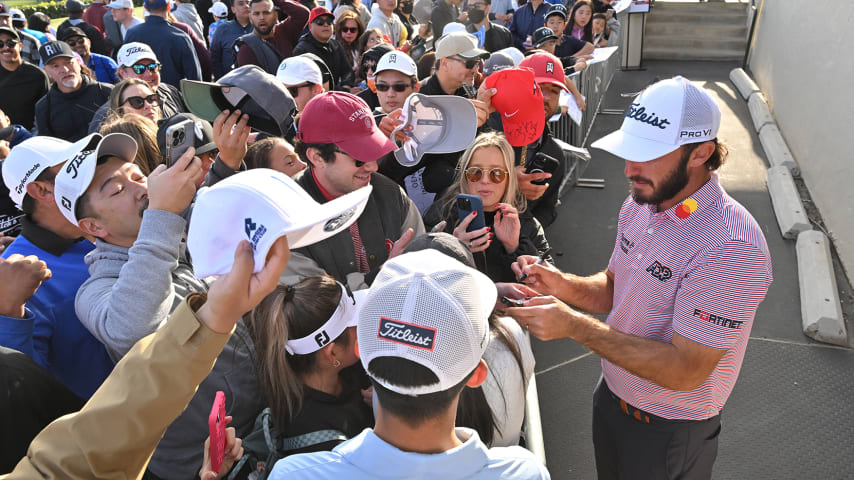
Max Homa, shown at this year’s Genesis Invitational, is a fan favorite in Los Angeles. (Ben Jared/PGA TOUR)
Acting, he said, wasn’t about fame or money, though. It was an opportunity to master a craft, which is why he grinded it out in places like New Brunswick, New Jersey.
“I approach it for the work values,” he said in that 1984 article in a New Jersey newspaper. “What you put into it is what you get out of it.
“I could do a day of extra (work) on a soap opera and get paid more than I get paid in a week here, so dammit you’d better like what you’re doing.”
His career took the family to California, where he became an acting coach and consultant for ABC. His clients have included Kirsten Dunst, Brie Larson and Jennifer Love Hewitt. John was a longtime consultant on the soap opera “General Hospital.” The brushes with fame were not what impressed his son, however. It was his father returning home past midnight from teaching acting classes.
“He was just grinding away, and … I loved that,” Max said. “That’s what really kind of inspires me and inspired me as a kid.”
Max was born in Burbank, the home of multiple movie studios. His determination as a toddler to conquer the first step in the family apartment has become a favorite anecdote to illustrate Max’s own doggedness. It prepared him for the biggest challenge of his PGA TOUR career, the year when he earned just $18,000 and couldn’t find a fairway.
It is the sort of season that few players have returned from. Homa has thrived since. He has won six PGA TOUR titles in the past five seasons. Four of those wins have come in California, including victories in Los Angeles (2021 Genesis Invitational) and San Diego (2023 Farmers Insurance Open).
Success in the majors is the next step.
Homa has yet to finish in the top 10 in a major championship. This would seem the perfect week to change that.
He is one of the rare players with competitive experience at Los Angeles Country Club. It has hosted just one elite event in the decade since his Pac-12 triumph. A U.S. team helmed by Scottie Scheffler and Morikawa authored a record-setting rout in the 2017 Walker Cup at LACC.
Homa has already won a PGA TOUR title at one of Los Angeles’ storied Thomas designs, The Riviera Country Club. He attended the same tournament as a kid, getting Payne Stewart’s autograph, eating soft pretzels and observing the pros he idolized, Woods most of all. When Homa won at Riviera two years ago, he said, “I don’t know if I could do anything cooler in golf than this.”
He has an advantage this week, but there also is the attendant pressure that comes with performing in front of friends and family, especially at the site of previous success.
A hometown major can elicit emotions that undermine the stoicism that golf demands. Even for millionaire athletes, there is something about returning to one’s roots. Sentimentality exerts a strong force.
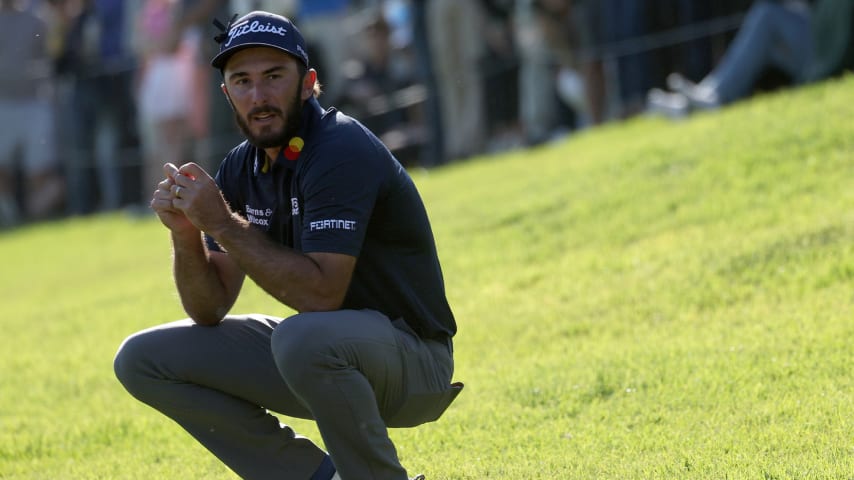
Competing in Los Angeles has elicited both happiness and heartbreak from Max Homa. (Getty Images)
The increased attention and requests present another challenge, disrupting the intricate routines that offer players a semblance of control in such an unpredictable game.
This was seen most clearly when The Open Championship returned to Royal Portrush in 2019, ending a decades-long absence from Northern Ireland. The country’s native son, Rory McIlroy, had shot a 61 of his own on that venue during his amateur days. But he hit his first tee shot of The Open out of bounds and shot 79. A spirited 65 in the second round sent fans running through the dunes at dusk, yelling as if he was contending for the claret jug.
The spirited support, even in the midst of failure, forced McIlroy to fight back tears after missing the cut by a shot.
“Sometimes you (live) so far away and you forget about all the people that are cheering you on back home,” McIlroy said after the second round. “And then you come and play in front of them. It definitely hit me like a ton of bricks today.”
Homa, who now lives in Arizona, was similarly emotional earlier this year, caught off guard when he got choked up in his Sunday press conference at The Genesis Invitational. After dueling with Rahm all day, Homa fell just short of winning at Riviera for a second time.
This win would have been in front of his loved ones, however, after COVID restrictions kept the galleries away two years earlier. That’s why it hurt so much to finish two shots back.
The opportunities to win any tournament at home, but especially a major, are exceedingly rare. This is the first U.S. Open in Los Angeles in 75 years.
“The hardest part is going to be the best part,” Homa said.
Los Angeles’ reputation as a golf hotbed is based primarily on the quality of its exclusive private clubs, several of which were designed by Thomas. There is a wide gulf between those courses and the ones available to the public, which often fall victim to overcrowding and underfunding.
Homa grew up at Vista Valencia, a 4,400-yard layout whose par of 61 matches his record score at Los Angeles Country Club. The small executive course doesn’t have a par-5 but it punches above its weight.
For decades, it was the only public course in the Santa Clarita Valley, a suburb just north of Los Angeles. Former PGA TOUR winner Jason Gore, who also grew up at Vista, laughs when he calls it “just sh—ty enough to be good.”

Max Homa’s Los Angeles golf origins
Imperfect lies require an increased level of precision and the intergenerational competition gives the junior golfers something to aspire to. Even while on TOUR, Gore would return to Vista on his off weeks to compete in its skins games. Homa was 12 when he first met him and has referred to Gore as his “big brother.”
Vista Valencia produced an inordinate number of Division I players, accomplished players who gave the younger ones something to aspire to.
“It was the perfect place to grow up,” Gore added. “We all kind of melted and meshed together.”
Juniors could play the accompanying Chica par-3 course, which didn’t have a hole longer than 150 yards, for $1. Max’s longtime caddie and friend, Joe Greiner, has the course record, an 8-under 19.
After sunset, kids flocked to the night-lit putting green. John MacArthur IV, who grew up with Homa in Valencia, remembers him driving a beat-up black Honda Civic to the course.
Homa was a solid recruit out of Southern California but not the sort of player Freeman was seeking to fill out a UCLA roster that had won the NCAA Championship in 2008, the year before Homa graduated from Valencia High School. Homa left college with an NCAA title of his own, however.
“Most guys stopped getting better. … He still hasn't stopped getting better since literally I'd say he was 15, and he's (32) now,” said MacArthur, who played at Pepperdine and then caddied on the PGA TOUR. “He's still improving somehow, probably a quarter stroke or a tenth of a stroke, but he's still somehow trimming it off of his game.”
Max and MacArthur practiced together often during their amateur days. Sometimes they’d meet in the mornings and then again in the afternoons to compare how far their wedges flew at different times of day.
“That's when I was like, this guy is serious,” MacArthur said. “I thought he was crazy. … He wasn't afraid to say stuff like, ‘I'm going to go on TOUR and I'm going to win.’
“It's like, ‘Why don't you try to be a third-team All-American first in college before you win majors?’ He wasn't afraid to say that stuff, not in an arrogant way, but in a ‘that's what I think I can do.’”
Homa wasn’t an NCAA All-American until his junior year at Cal, and even then he was named to the third team. Then his career finished with a flourish.
The scoring average in that opening round on Los Angeles Country Club’s par-70 North Course was 73.3. Homa finished that first round 14 shots ahead of Rahm, who was playing for Arizona State.
The course got even harder as the tournament progressed. By shooting even par across the final three rounds, Homa actually increased his lead. Only five other players finished under par. Rahm finished 10th at 5 over.
At the Pac-12 trophy ceremony, Freeman couldn’t help but poke fun at himself, the coach who’d let the winner get away. A few months later, after Homa had turned pro, they met for lunch so Freeman could ask what he missed in the recruiting process and what traits allowed Homa to keep getting better.
“A burning desire to prove to himself and everyone else that he was a great player,” Homa said, according to Freeman. “He decided to work as hard as he could to see how good he could become.”
Now Homa has another opportunity to make history, and change the course of his career, at Los Angeles Country Club.











